How to Increase Egg Production in Commercial Layers
If you are thinking how to increase egg production in commercial layers, you have to keep in mind something. You need to have a clear knowledge about the production capabilities of your flocks. You must be aware of how to gauge the number of eggs that your flocks can produce and obviously the factors that are affecting the egg production rate. You have to identify the hens, which are egg laying chickens, which are not laying hens. When you have all knowledge be sure that you are prepared for starting a successful poultry farming business.
Egg Production Expectation
A laying hen lays only one egg in a day, and in some days it may not lay any eggs at all. It totally depends on the hen’s reproductive system. A hen body start to form a new egg after it has laid the previous egg. It takes about 26 hours to form an egg fully, so mathematically a hen will lay its next egg two hours late each day, the reproductive system of a hen also sensitive to light exposure. So if a hen lays egg too late in a day it will skip the next day.
A flock of hens do not start laying on the same day. They also do not lay eggs for the same period of time. The time period that a hen will produce eggs varies from hen to hen. The egg level of egg production decreases each year and the size of the eggs increases. The number of eggs that a hen produces each year and the number of years that a hen produces eggs depends on some factors:
- Management of pullets prior to lay
- Breed
- Light management
- Space allowances
- Nutrition
Factors that Affect Egg Production of Poultry
There are many factors that directly or in directly affects the egg production rate. To know these factors we need to do a research on the history of hens. The factors like aging, feed consumption, water, intensity and duration of light, diseases etc affects the production of eggs.
- Aging hens: Aging is a big problem in egg production. A hen can live many years and it lays eggs continuously for these years. But after a sudden period of time like 2 or 3 years it’s egg production rate significantly reduces. It actually depends on the quality of hens that you are raising. Good layer hens lay eggs continuously for about 50 to 60 weeks then it takes a break. This time period is called molt. Poor and older layers more often molt and lay eggs less continuously.
- Improper Nutrition: Chickens need a balanced diet with enough level of protein and calcium to continue the maximum egg production over a certain period of time. Improper nutrition can make the hens to stop laying eggs. Imbalanced level of protein, energy and calcium can drop the egg production. That’s why it is so important to supply a continuous balanced food to get a continuous supply of eggs.
Imbalanced food can cause many problems like oviductal prolapse. It mainly occurs when the birds are too fat or the egg size is too large. Prolapse can cause permanent damage to the hens. - Rejecting important food ingredients: Another important factor that makes you hens to lay eggs occasionally is the subtraction of important food ingredients.
- Salt: Every animal needs salt. If you subtract salt from the food list it will reduce the egg production rate. Most of the animal’s food contains salt in the form of sodium chloride. It doesn’t contain any iodine.
Sodium is an important nutrient which plays an important role in maintaining the body fluid volume, proper osmotic relation and blood ph. Chlorine is also an important ingredient. HCl which release from stomach helps to digest food. Chlorine also maintains the osmotic balance in body fluid. - Calcium: The egg shell of hens is mainly composed of calcium carbonate. New hens need relatively a low amount of calcium at their growing period but when it start to lay eggs, it needs more calcium about four times relative to previous days. Inadequate calcium supply will lead to reduce egg production rate. Calcium can be supplied with the food. Limestone is a great source of calcium. You can mix it with the food you supply to your hens.
- Vitamin D: Vitamin D is needed for the absorption of calcium. If improper vitamin D is supplied with the food ingredient it will result in decreased egg production. Feed contains vitamin D in two forms D3 and D2. In birds D3 is more active than D2. So you have to supply vitamin D only in the form of D3.
- Protein: The requirement of protein is actually the requirement of amino acid which constitute the protein. There are about 22 types of amino acid in body protein and all of them are essential. Hens can’t produce all of them and also can’t produce enough to meet their requirement. So poultry farmers need to supply extra protein with the supplied food. The requirement of amino acid depends on the age, type and strain.
- Salt: Every animal needs salt. If you subtract salt from the food list it will reduce the egg production rate. Most of the animal’s food contains salt in the form of sodium chloride. It doesn’t contain any iodine.
- Management mistakes: Improper management system can also reduce egg production. Some mistakes that the farmers often does are:
- Out of food is one of them. If you keep your hens out of food it will reduce its egg production. The reduction of egg production depends on the time without food. Make sure that your birds have enough supply of foods.
- Water is also an essential element. Water represents about 70% of body weight. Inadequate water supply can also reduce egg production. Birds are more sensitive to water than food.
- Daylight is also a great factor which controls the production of eggs. Hens need at least 14 hours of daylight. The intensity of light must be sufficient to increase egg production.
How To Manage Egg Producing Hens?
Two methods are followed for the housing and management system of layer hens and they are the flood production and the caged layer production. By using any of these methods, you can keep your hens in production throughout the year.
You should keep your chicken farm away from other. A good drainage system is a must for the poultry farm. To provide enough light intensity, adequate light fixtures are needed. A good supply of fresh and clean water is also a must.
The poultry house must allow a plenty of sunlight and ventilation. Removable doors or curtains can be used so that the openings can easily be opened when the climate changes. You need to keep the house comfortable and clean by ventilating from all the sides in the time of summer and closing the openings at the time of winter.
The layer hens are placed in a poultry battery cage with the supply of enough food and water to each cage. Each cage contains maximum 4 or 5 hens. Our poultry cages come with full accessories: Nipple drinking system, Medication tanks, Adjustable foot plates for leveling, Water pipe, Pipe connect and Feeder groove, etc. The cages provide big help to increase egg production in chickens.
Floor production system is used either for egg type or broiler type birds. In commercial birds, this method is used when for the production of fertile eggs. The birds are kept in a covered floor to give them floor production. But we couldn’t take a full use of the coop space by this way. And it’s not easy to collect the eggs and keep the eggs clean.
How Should You Plan Your Poultry for Maximum Egg Production?
To make sure that your poultry will increase egg production, you have to follow the process described below:
- Provide basic needs:
- Food: To keep your flocks body functioning properly you need to supply nutrient rice units each day, protein, carbohydrates, vitamins and minerals. For the laying flocks it is essential to provide them with 16 to 18 percent protein and 3 % calcium with their daily food to keep them strong and for strong egg shell. Many of the poultry farmers try to save money by feeding household food scraps and scratch grains. It remarkably doesn’t increase the egg production.
- Water: A constant supply of fresh and clean water is needed for maximum egg production. Not only the hen’s body but also half of the eggs volume consists of water. If you fail to supply enough amount of fresh water, eggs production will not be increased. So you have to ensure that you have a reliable water source for both hot and dry period.
- Clean coops: Which raising system you are using doesn’t matter. The thing that really do matter is the environment where you raising your birds. You must avoid crowding and you must try to keep the environment as clean as possible. Our poultry battery cage with automatic manure cleaning system may help you to solve this problem. And you should not allow any visitors to your farm and if you need to make a visit you should take a shower before you visit. You should avoid clothing like baseball cap, shoes etc.
- Provide nest Boxes: To get eggs clean, nice and intact-you need to persuade your birds to lay eggs where you want. Don’t let them lay eggs in some corner of the coop. To do this job perfectly you can buy easy to clean nest boxes from any poultry supply companies or you can build one as like as you want. Place those boxes at least two feet off the ground and keep a layer of soft litter like non toxic wood shaving. But if you need a better way, we still think you should buy the chicken cage, the automatic egg collector may necessary for a big chicken farm.
Egg eating is a common thing among the hungry chicken and one chicken can teach the other to do the same thing. So don’t let them grow this habit. Most of the chicken finishes laying eggs by 10 am so knowing the exact time you have to collect the eggs before a hungry hen attacks it. - Set an artificial light source: Light is another good factor which controls the egg production. For maximum egg production 14 hours of light is needed. Hens at winter season reduce their egg production due to insufficient of light and its intensity. But if you install an artificial light source in your farm and ensure 14 hours of light with sufficient intensity. You will be able to increase the egg production rate.
- Clean the eggs: Frequent egg collection with dry, clean, uncovered coops and nest box will last a long time keeping your bird’s eggs clean.
If the eggs are found to be clean you don’t need to wash it again, it will remove the invisible protective layer. If the amount of dirt is small, you can follow these:- Dry clean the eggs with the help of fine grit sandpaper.
- You can use weight washing. But if you do it improperly bacteria can be sucked into the eggs.
- Do not store the eggs with odorous foods.
It doesn’t take much time to collect the eggs from a small layer flock if you know the right ingredient.
How to identify the laying hens?
To determine the hens which are egg laying chickens, first you have to know about the types of hens you are using, it is important to determine the hens. In many breeds, the hens which are laying eggs have a large red combs and wattles. In other types of breed, the hens which are laying eggs have a normal combs and wattles but it becomes fade after the laying period. Hens like Plymouth Rocks and Rhode Island Reds have yellow pigment in their skin and it is a good indication to identify the laying cycle the hens are now. The hens lose the pigments in a specific order. First the color start to fade from the vent, then start to fade in face and last of all the feet.
There is another method of identifying the hens which are laying now is by evaluating the level of fat in the abdominal, and abdomen capacity which can be measured by measuring the distance between the breast bones or between the pubic bones, or by measuring the distance between the pubic bones and tip of the keel.
What’s The Reasons of Hens to Stop Laying Eggs?
There are many reasons which affect hens not to lay eggs. If your hens stop laying eggs you can ask the following question to find out the reasons.
- Does your hens lay eggs for more than 10 month or more? If the answer is yes then remember that your hens are at the end of the laying cycle. Now it will stop eggs production and go through a molt. It will take a break and then it will start laying eggs again. But if your answer is no then make an investigation, there are something else which is causing the lack of egg production.
- Are you supplying enough clean water? If the hens can’t drink, they will not eat. So you have to make sure that you have a good watering system for your hens. You have to keep your watering system operational. It can be a challenging task for you in winter season when the water becomes frozen. You can buy waterers which have attached heater. It will prevent water from being frozen. Problems can occur in summer too. The hens will stop drinking water if the temperature is too high.
- Are the hens eating right feed? If your hens eat wrong food and if they don’t get enough feed. It will molt repeatedly and reduce the egg production.
- Do you provide enough light? Light has a direct impact on egg production. If you don’t provide enough light, your hens will decrease the production rate. So, you have to provide sufficient light to increase egg production rate.
- Do your hens are infected by parasites? Both internal and external parasite can affect the production rate. So you have to be careful.
Egg Production Costs and Estimated Profits
First we start with the cost. We can divide the cost into different sectors.
Expenses
Feed expenses: The feed cost for chicken is about $.5/lb. A hen eats about 1/4 lb per day. and if you have about 40 hens then the cost for feed is:
- 40 birds * 1/4lb=10lb per day
- 10 lb * $.5 =$5 dollar
- $5 * 365 =1825 dollar per year
Labor expense: This is another big one. It involves visiting chicken house to check water and feed supply, collect eggs, cleaning and inspecting eggs. It is:
- 30 min per day 4 hours in a week.
- Around 200 hours a year. (If my labor cost is $3 per hour then)
- $3 x 200 = $600 per year
Other costs: There are other costs too like diseases, electric bill etc. let this cost is about $400 per year.
Now we start to calculate the income and profit from our hens.
Income: We have 40 hens which also includes poor and 3 years old layer. So we get 5 eggs per week, 40 hens give 5×40 = 200 eggs per week. And at winter season if we do not use any artificial lighting system, our hens gives us 80 eggs per week.
- 40 weeks at 200 eggs/week = 8000 eggs
- 12 weeks at 80 eggs/week = 960 eggs
- Total 8960 eggs = 745 dozen (Here we assume the price of each dozen egg is $6. So we have $6 x 745 = $4470.)
- We spent 1825+600+400=$2825 per year.
- Our profit is 4470-2852=$1645 per year.
Anyway, it’s just a sample, the price of eggs may different in different countries.



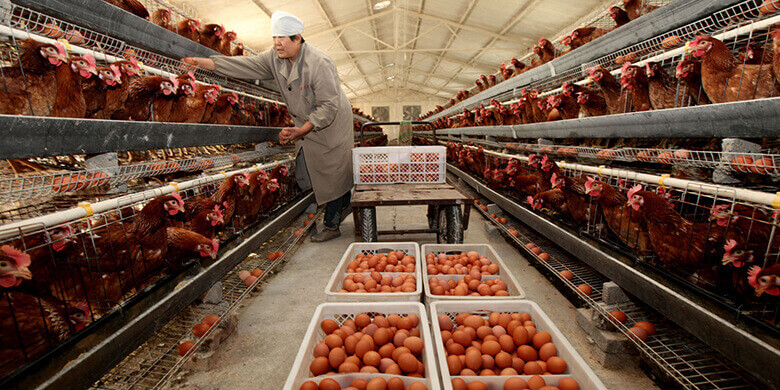

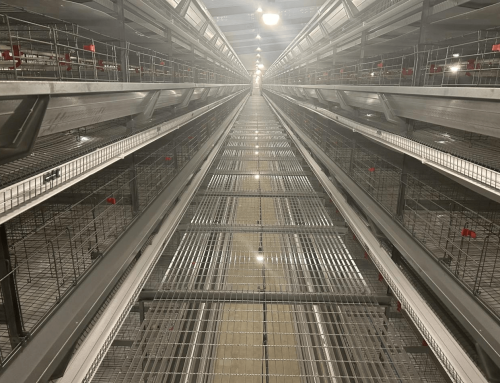
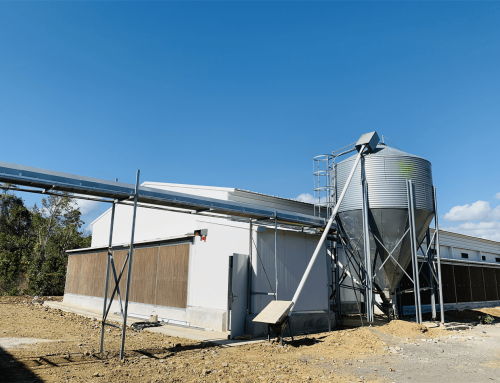
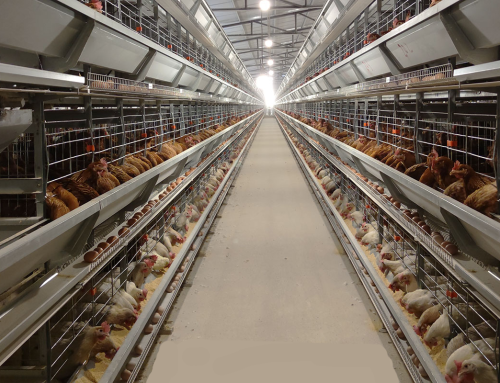
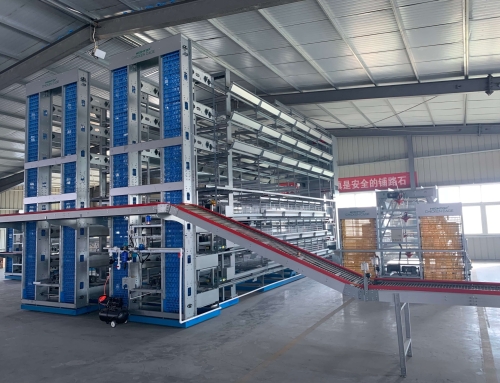
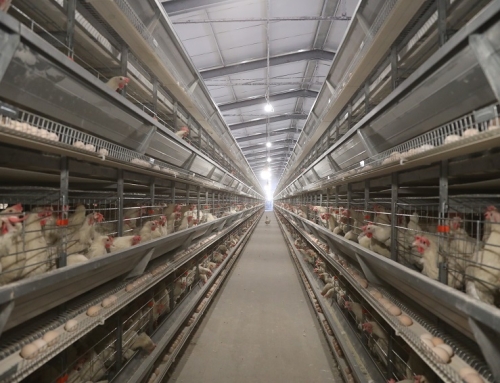
Leave A Comment